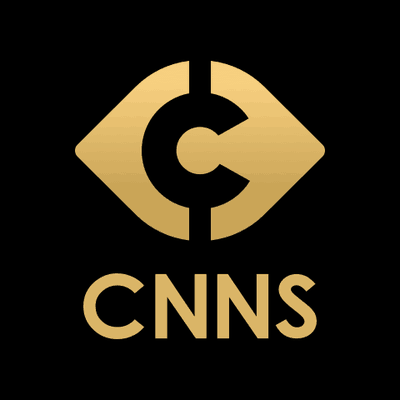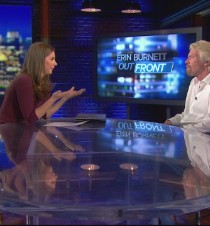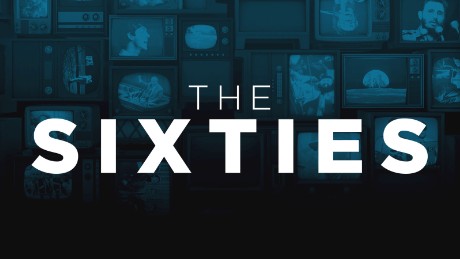CNN
This is much like the way in which the human visual system imposes coordinate frames in order to characterize shapes. Currently, the widespread approach to deal with this downside is to train DigitalCash the network on remodeled knowledge in several orientations, scales, lighting, and so on. in order that the network can deal with these variations.
Sanders Campaign Files Federal Court Papers To Keep LA County Polls Open Longer After “Extreme” Waits
Trained the community on ImageNet data, which contained over 15 million annotated photographs from a complete of over 22,000 categories. Let’s take a moment to see how Faster R-CNN generates these region Nano Coin proposals from CNN features. Faster R-CNN provides a Fully Convolutional Network on prime of the features of the CNN creating what’s known as the Region Proposal Network.
This can be regarded as a zero-sum or minimax two participant recreation. The generator is making an attempt to idiot the discriminator while the discriminator is trying to not get fooled by the generator. As the models train, both methods are improved until a degree where the “counterfeits are indistinguishable from the real https://cryptolisting.org/coin/plac articles”. Improvements had been made to the original model because of three major issues. Training took a number of levels (ConvNets to SVMs to bounding box regressors), was computationally costly, and was extraordinarily gradual (RCNN took fifty three seconds per image).

The function of R-CNNs is to solve the issue of object detection. Given a certain image, we wish to have the ability to draw bounding packing containers over all the objects.

Former CNN anchor Bobbie Battista dies of most cancers at age sixty seven

They are also known as shift invariant or space invariant artificial neural networks (SIANN), based mostly on their shared-weights structure and translation invariance characteristics. They have applications in picture and video recognition, recommender systems, picture classification, medical picture analysis, pure language processing, and monetary time series.
How the Lottery Ticket Hypothesis is Challenging Everything we Knew About Training Neural Networks
Subsequently, an analogous GPU-primarily based CNN by Alex Krizhevsky et al. received the ImageNet Large Scale Visual Recognition Challenge 2012. A very deep CNN with over a hundred layers by Microsoft gained the ImageNet 2015 contest. The first GPU-implementation of a CNN was described in 2006 by K.
Together, these properties enable CNNs to attain better generalization on imaginative and prescient issues. Weight sharing dramatically reduces the number of free parameters realized, thus decreasing the reminiscence requirements for running the community and permitting the training of bigger, extra powerful networks. A 1000 https://blockchaincasinos.online/×1000-pixel image with RGB colour channels has 3 million weights, which is too excessive to feasibly course of efficiently at scale with full connectivity. Each neuron in a neural community computes an output value by making use of a particular perform to the input values coming from the receptive field in the earlier layer.
A CNN architecture is formed by a stack of distinct layers that remodel the input volume into an output quantity (e.g. holding the category scores) via a differentiable function. Also, such community architecture does not bear in mind the spatial construction of data, treating enter pixels which https://blockchaincasinos.online/bitcoin-bep2-charts-price-dynamics-of-costs-btcb-online-history-of-values/ are far aside in the identical way as pixels which might be close collectively. This ignores locality of reference in image data, both computationally and semantically. Thus, full connectivity of neurons is wasteful for purposes corresponding to image recognition which are dominated by spatially native enter patterns.
- Training took multiple stages (ConvNets to SVMs to bounding field regressors), was computationally costly, and was extraordinarily sluggish (RCNN took fifty three seconds per picture).
- In 1990 Hampshire and Waibel launched a variant which performs a two dimensional convolution.
- The reasoning behind this complete process is that we want to look at what type of constructions excite a given feature map.
- At Athelas, we use Convolutional Neural Networks(CNNs) for lots more than just classification!
- The resulting recurrent convolutional network allows for the flexible incorporation of contextual information to iteratively resolve native ambiguities.
- In fact, this was precisely the “naïve” concept that the authors came up with.

Fast R-CNN was able to remedy the issue of pace by principally sharing computation of the conv layers between different proposals and swapping the order of producing region proposals and operating the CNN. We would end up with an extremely giant depth channel for the output volume. The way that the authors tackle that is by including 1×1 conv operations before the 3×3 and 5×5 layers. The 1×1 convolutions (or community in community layer) present a way of dimensionality discount.
The system trains directly on three-dimensional representations of chemical interactions. Similar to how picture recognition networks learn to compose smaller, spatially proximate options into bigger, complicated structures, AtomNet discovers chemical options, corresponding to aromaticity, sp3 carbons and hydrogen bonding. Subsequently, AtomNet was used to predict novel candidate biomolecules for a number United States coin of disease targets, most notably remedies for the Ebola virus and a number of sclerosis. Pooling is an important component of convolutional neural networks for object detection based on Fast R-CNN architecture. The feed-ahead structure of convolutional neural networks was prolonged in the neural abstraction pyramid by lateral and feedback connections.
With traditional CNNs, there’s a single clear label related to every picture within the training data. The mannequin described in the paper has coaching examples that have a sentence (or caption) related to each image. This type of label known as a weak label, where segments of the sentence check with (unknown) components of the picture.
The resulting recurrent convolutional network allows for the versatile incorporation of contextual information to iteratively resolve native ambiguities. This paper caught my eye for the primary Review reason that improvements in CNNs don’t essentially have to come from drastic adjustments in network structure.
This reduces reminiscence footprint as a result of a single bias and a single vector of weights are used across all receptive fields sharing that filter, versus each receptive area having its personal bias and vector weighting. A localization network bitcoinz which takes within the input quantity and outputs parameters of the spatial transformation that ought to be utilized. The parameters, or theta, can be 6 dimensional for an affine transformation.
Region Based CNNs (R-CNN – 2013, Fast R-CNN – 2015, Faster R-CNN –
Very massive enter volumes may warrant 4×4 pooling in the lower layers. However, choosing larger shapes will dramatically scale back the dimension of the signal, and will end in excess data https://cryptolisting.org/ loss. Another essential concept of CNNs is pooling, which is a form of non-linear down-sampling. There are several non-linear functions to implement pooling among which max pooling is the most typical.

R-CNN – An Early Application of CNNs to Object Detection
The time delay neural network (TDNN) was launched in 1987 by Alex Waibel et al. and was the primary convolutional community, because it achieved shift invariance. It did so by utilizing weight sharing in combination with Backpropagation training. Thus, while also using a pyramidal construction Price as in the neocognitron, it carried out a world optimization of the weights, as a substitute of a local one. A distinguishing characteristic of CNNs is that many neurons can share the same filter.
@CNN
So, in a fully linked layer, the receptive area is the complete previous layer. In a convolutional layer, the receptive area is smaller than the complete previous layer. Convolutional networks could embrace local or world pooling layers to streamline the underlying computation. Pooling layers reduce the size of the data by combining the outputs of neuron clusters at one layer into a single neuron in the subsequent layer.
The process may be split into two basic elements, the area proposal step and the classification step. Utilized ideas from R-CNN (a paper we’ll focus on later) for his or her detection model. They use a mean pool as an alternative, to go from a 7x7x1024 quantity to a 1x1x1024 volume. Like we discussed in Part 1, the first layer of your ConvNet is always a low level function detector that will detect easy edges or colors on this particular case.
